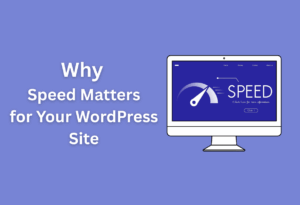Many web developers and designers overlook the significance of Interaction to Next Paint (INP) metrics when optimizing their sites. By understanding and utilizing these metrics, you can identify and minimize input delays, ultimately creating a smoother user experience.
This guide will walk you through necessary steps to leverage INP metrics effectively, enhancing user engagement and satisfaction on your platform. Let’s dive in and explore how these metrics can transform your web performance and make a positive impact on your users.
Understanding INP Metrics
While optimizing your website for better user experience, it’s important to understand INP metrics, which stand for Interaction to Next Paint. These metrics measure the time between a user’s interaction with your site, like clicking a button, and the subsequent visual response on the screen. By analyzing these metrics, you can pinpoint potential delays that may hinder user engagement and satisfaction.
What are INP Metrics?
There’s a focus on how quickly your page responds to user inputs. INP metrics help you gauge the responsiveness of your site, identifying the latency in interactions that might make users feel disconnected. By keeping an eye on these metrics, you can work towards enhancing your website’s overall usability.
Importance of INP Metrics in Web Performance
Importance lies in the fact that INP metrics directly impact user experience. When your site’s response times are slower than expected, users are likely to become frustrated and abandon their tasks. Understanding and improving these metrics allows you to create a seamless interaction, keeping users engaged longer and increasing the likelihood of conversions.
What you need to know is that enhancing INP metrics not only improves user satisfaction but also positively influences your site’s overall performance. Faster responses to user actions can lead to higher retention rates, better SEO rankings, and increased sales. By addressing input delays, you position your website to thrive in a competitive digital landscape.
Factors Contributing to Input Delays
Even the most well-designed websites can suffer from input delays that can frustrate users. Here are some factors contributing to these delays:
- Network Latency
- Browser Processing Time
- Device Performance
- JavaScript Execution
- CSS Rendering
Perceiving these factors can help you identify and target specific issues within your web application.
Network Latency
On average, network latency impacts how quickly requests you send to servers return results. High latency can cause significant delays, leading to unnecessary waiting times for users, which can ultimately diminish their overall experience.
Browser Processing Time
Contributing to input delays, browser processing time refers to the amount of time it takes for the browser to interpret and execute commands. The efficiency of your website’s code and the complexity of the elements on your page can directly affect this metric.
Latency in browser processing is heavily influenced by how many elements need to be processed and the browser’s ability to handle multiple tasks simultaneously. Optimizing assets and reducing elements can improve this time, leading to better user interactions.
Device Performance
Performance issues arise when the device being used is outdated or has limited resources. Devices with lower processing capabilities may struggle more with demanding web applications, leading to delays in input handling.
With the wide variety of devices your audience may use, it’s necessary to ensure your website is optimized for lower-end hardware. Simplifying graphics and minimizing resource-heavy interactions can enhance performance across all device types.
JavaScript Execution
Factors like how efficiently JavaScript code is executed can significantly influence input delays. When JavaScript is poorly optimized, it can create bottlenecks that slow down users’ interactions.
A vital consideration is the number of scripts running on your web page and their execution order. Using asynchronous loading, minimizing script size, and ensuring clean coding practices can all reduce the execution time and improve responsiveness.
CSS Rendering
Some aspects of CSS rendering can also contribute to input delays. Complicated stylesheets or too many CSS rules can slow down how elements are rendered on the page.
Browser engines must parse, compute styles, and layout each element, which can become cumbersome with complex CSS. Streamlining CSS, using fewer selectors, and optimizing style rules can lead to quicker rendering times and a more responsive user experience.
How to Measure INP Metrics
Despite the growing importance of INP (Input Navigation Performance) metrics in enhancing user experience, many developers and site owners remain unsure about how to accurately measure them. Implementing effective measurement techniques can help you identify input delays, allowing you to optimize your site accordingly.
Tools for Measuring INP
While there are various tools available, using a combination of browser-based solutions and performance monitoring platforms can provide the most insightful measurements for your INP metrics. Options like Google’s Lighthouse and WebPageTest can help you gain detailed insights into input performance.
Setting Up Your Measurement Environment
Tools such as Chrome DevTools allow you to emulate different devices and network conditions when evaluating your site’s performance. You can configure these tools to assess how quickly your site responds to user inputs under various scenarios, providing a comprehensive overview of your INP metrics.
Analyzing INP Data
Measure your INP data carefully to get actionable insights that can inform your optimization efforts. By focusing on metrics like input latency and identifying the areas of your design that slow down interactions, you can make informed decisions for improvements.
Environment factors play a significant role in the INP data you collect. Analyzing data under different device settings and network conditions will help you understand how users experience your site in real-world scenarios. This nuanced analysis can guide you in making targeted enhancements to reduce input delays effectively.
Tips to Reduce Input Delays
Once again, addressing input delays is vital for an optimal user experience. Here are some tips to help you achieve that:
- Optimize network performance
- Minimize JavaScript blocking
- Use efficient rendering techniques
- Implement progressive enhancement
- Leverage browser caching
This list will guide you in enhancing user engagement through improved input response times.
Optimize Network Performance
Little does it take to boost your website’s speed by improving network performance. You can utilize Content Delivery Networks (CDNs) to serve content closer to users, thereby reducing latency. Consider compressing images and minimizing HTTP requests to streamline your site’s overall performance.
Minimize JavaScript Blocking
Minimize any blocking caused by excessive JavaScript on your pages. This includes deferring the loading of non-necessary scripts and moving critical script elements closer to the page’s bottom. By doing this, you ensure that key content loads quickly, improving overall input response times.
Performance can be enhanced further by auditing your JavaScript for any heavy libraries that might delay rendering. By selectively loading scripts and using async or defer attributes, you can significantly reduce blocking times, allowing necessary interactions to occur smoothly.
Use Efficient Rendering Techniques
Network efficiency hinges upon how well you render your webpages. Techniques such as lazy loading images, avoiding large calculation tasks in the main thread, and minimizing repaint and reflow can substantially reduce rendering time. Each action you take in this area contributes to a snappier user experience.
Reduce the total number of DOM elements and leverage CSS animations instead of JavaScript animations. Efficient rendering allows for quicker visual feedback, which directly impacts user input speed and overall satisfaction, leading to more engaged users on your site.
Implement Progressive Enhancement
Even while crafting your site, consider implementing progressive enhancement. This technique focuses on building a solid baseline experience for all users while adding advanced features for capable browsers or devices. This ensures consistently fast performance across various environments.
Techniques such as serving necessary HTML and basic styles first, while adding interactive elements later, can greatly improve the responsiveness of your website. Users will appreciate the seamless experience, no matter how sophisticated the technology is that they are using to access your site.
Leverage Browser Caching
There’s a significant advantage to leveraging browser caching for your assets. By setting appropriate cache headers, you allow users’ browsers to store frequently accessed files, reducing load times for repeat visits. This enhances input speed and delivers a more responsive experience.
Rendering performance can greatly improve as you serve cached assets instead of re-fetching them. This means faster interactions for users, creating an environment where they are more inclined to engage with your content repeatedly. Take the time to analyze your caching strategy to maximize your site’s efficiency.
Enhancing User Engagement
For any digital platform, enhancing user engagement is vital for retaining visitors and encouraging them to interact more deeply with your content. Engaged users are more likely to convert into loyal customers, share your platform with others, and provide valuable insights into what works well.
By focusing on user engagement metrics, you can tailor your strategies to foster a more enjoyable and meaningful experience for your audience.
Importance of User Engagement Metrics
User engagement metrics provide you with data that reveals how effectively your content resonates with visitors. These metrics help you understand user behavior, preferences, and pain points, allowing you to make informed decisions that enhance their overall experience and satisfaction.
Strategies to Keep Users Engaged
There’s an array of strategies you can implement to keep users engaged with your platform. From personalized content and interactive features to timely updates and rewards, the possibilities are broad. By focusing on creating a tailored experience that meets your users’ needs, you can significantly improve engagement levels.
The key is to maintain a dynamic approach by regularly refreshing your content and offerings based on user preferences. You can also incorporate gamification elements, social sharing options, and interactive tools that encourage users to participate actively and return frequently. Engaging users is about creating a two-way communication channel where they feel valued and involved.
Utilizing Feedback from INP Metrics
Importance of gathering and analyzing feedback from INP metrics cannot be overstated. These insights provide you with a clearer picture of how users interact with your platform, highlighting areas that require improvement and aspects that are working well.
Plus, by leveraging this feedback, you can make data-driven decisions that enhance user experiences. Regularly assessing these insights allows you to adapt your strategies effectively, ensuring users feel heard and valued. As a result, you create an environment that fosters loyalty and encourages ongoing engagement with your content and services.
Best Practices for Continuous Improvement
Your approach to enhancing user engagement should be a dynamic process, involving continuous assessment and tactical adjustments. Implementing best practices can lead to lasting improvements in input metrics and overall user experience.
Regular Monitoring and Reporting
An effective strategy involves routinely tracking your INP metrics. Develop a reporting process that provides insights into performance fluctuations over time. This allows you to identify patterns, understand user behavior, and quickly address any issues that may arise.
Iterative Testing and Refinement
Some developers find that adopting an iterative testing approach is beneficial to enhance input performance. This involves launching small, incremental changes and closely monitoring their effects on user engagement.
With each iteration, you gather valuable data that informs subsequent adjustments. This hands-on approach not only helps fine-tune your website’s responsiveness but also allows you to adapt to real-time user feedback, making your digital product more appealing and user-friendly.
Staying Updated with Technology Trends
Improvement in input metrics is also about staying ahead of the curve. Make it a habit to follow the latest advancements in web technologies, as they can significantly impact user experience.
With the rapid evolution of tools and best practices, keeping informed will empower you to incorporate innovative solutions and optimize your platform effectively. Engaging with industry trends, attending conferences, and participating in online communities can provide you with fresh ideas and new methodologies that enhance your users’ interaction with your site.
Conclusion
With these considerations in mind, you can effectively utilize INP metrics to minimize input delays and boost user engagement. By continuously monitoring your site’s performance and analyzing user interaction data, you can identify areas for improvement.
Implementing strategies such as optimizing resource loading, reducing blocking time, and enhancing responsiveness will create a more fluid user experience. Ultimately, investing in these enhancements not only uplifts engagement but also fosters user loyalty, leading to better overall website performance.





